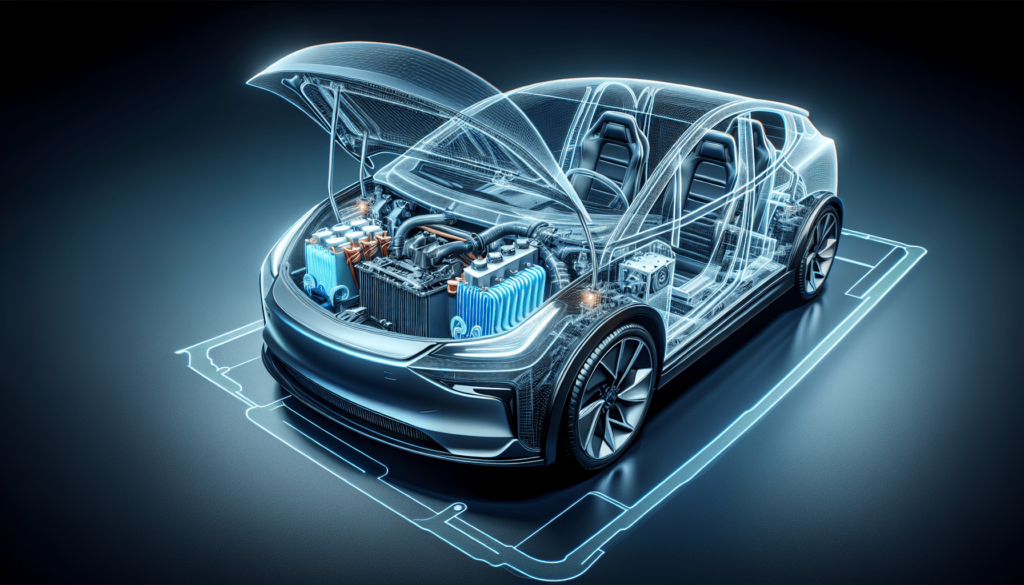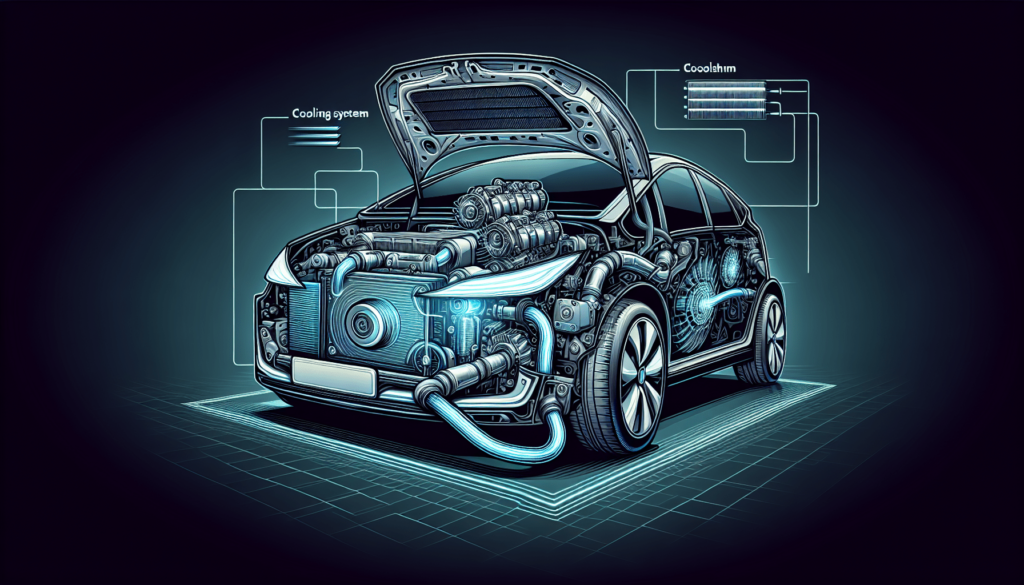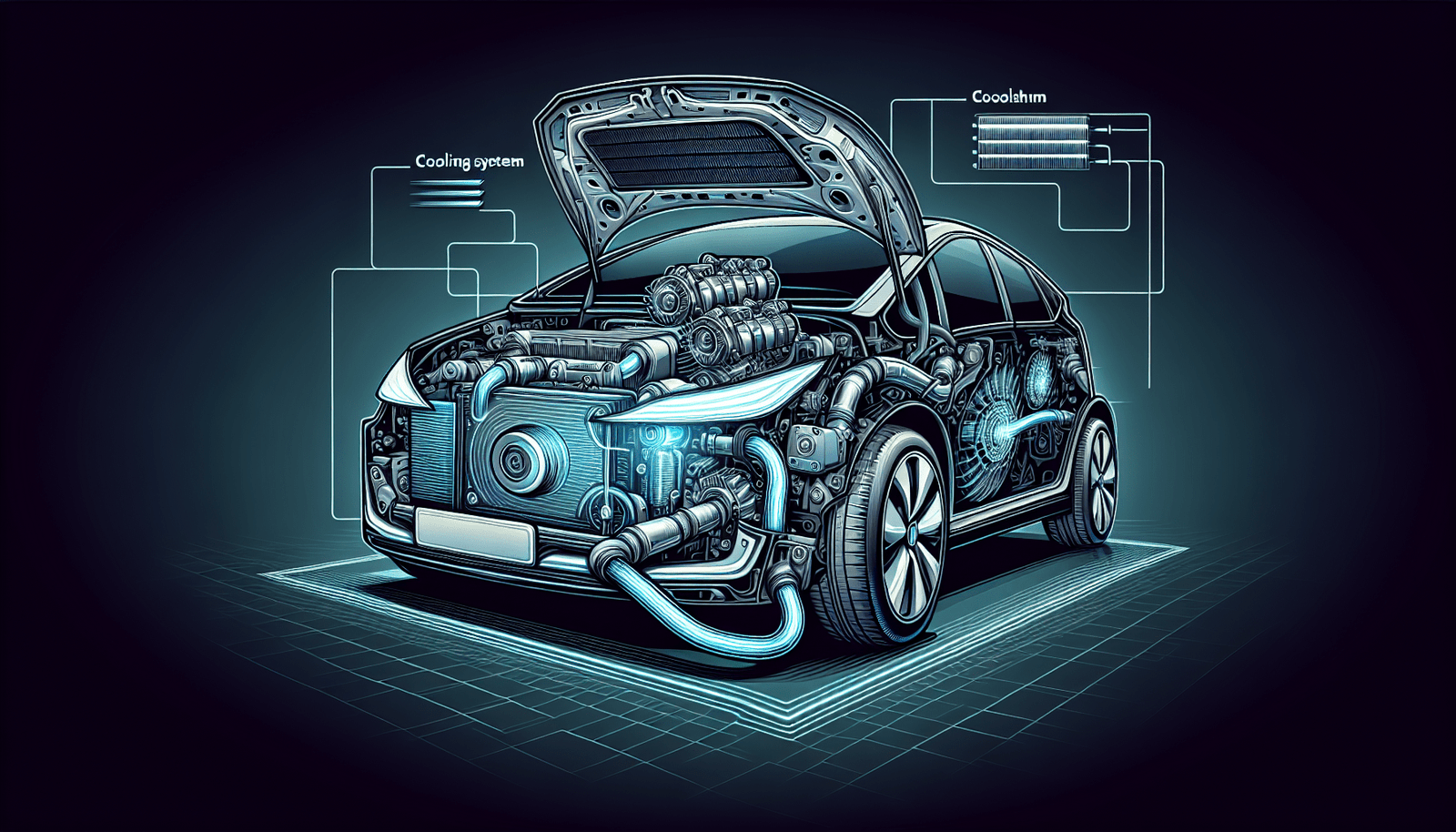In the ever-evolving realm of electric vehicles, one crucial aspect that demands constant innovation is the cooling system. As technology advances and electric vehicles become more mainstream, the need for efficient cooling mechanisms becomes increasingly vital. This article explores the anticipated developments in electric vehicle cooling systems, shedding light on the exciting progress and potential breakthroughs that lie ahead. From enhanced thermal management to innovative solutions, discover the future of keeping electric vehicles cool.
High-Efficiency Coolants
Improved Heat Transfer
One of the key developments in electric vehicle cooling systems is the use of high-efficiency coolants. These coolants are specifically designed to enhance heat transfer, ensuring that the components of the electric vehicle remain within their optimal operating temperatures. By improving heat transfer, these coolants help to prevent overheating and maintain the overall performance and lifespan of the vehicle.
Reduced Power Consumption
Another benefit of high-efficiency coolants is their ability to reduce power consumption. By effectively dissipating heat and maintaining lower operating temperatures, these coolants help to minimize the energy required for cooling processes. This reduction in power consumption contributes to improved energy efficiency and increased driving range for electric vehicles.
Enhanced Cooling Performance
High-efficiency coolants also offer enhanced cooling performance compared to traditional cooling systems. They are designed to effectively extract heat from the electric vehicle’s components, ensuring that they operate within their desired temperature range. This improved cooling performance not only safeguards the longevity of the vehicle but also enhances its overall performance, making electric vehicles more reliable and efficient.
Advanced Heat Exchangers
Compact Designs
Advanced heat exchangers play a crucial role in electric vehicle cooling systems by facilitating the transfer of heat between different components. One notable development in this area is the use of compact designs for heat exchangers. These compact heat exchangers are highly efficient and allow for more efficient integration within the limited space of electric vehicles. This compactness contributes to the overall lightweight nature of electric vehicles while optimizing heat dissipation.
Optimized Heat Dissipation
By utilizing advanced materials and design techniques, modern heat exchangers offer optimized heat dissipation capabilities. They efficiently dissipate excess heat generated by various components, such as the battery and motor, ensuring that the electric vehicle operates at its maximum efficiency. This optimized heat dissipation not only enhances the performance and reliability of the vehicle but also contributes to its overall energy efficiency.
Smart Integration with Other Components
Another significant development in heat exchanger technology is the smart integration with other components of the electric vehicle. Through advanced integration techniques, heat exchangers can be seamlessly incorporated into the overall vehicle structure, optimizing space utilization and improving aerodynamics. This integration also allows for efficient heat transfer and dissipation, further enhancing the cooling performance and overall efficiency of electric vehicles.

This image is property of pixabay.com.
Thermal Management Systems
Active Control of Cooling Processes
Thermal management systems have evolved to include active control of cooling processes in electric vehicles. This means that the cooling system actively responds to changes in temperature and adjusts its cooling capacity accordingly. By actively controlling cooling processes, these systems can maintain optimal operating temperatures for all vehicle components, contributing to improved performance and energy efficiency.
Predictive Maintenance Features
One of the developments in thermal management systems is the incorporation of predictive maintenance features. These features utilize sensor data and advanced algorithms to predict potential issues or failures in the cooling system and take preventive measures. By identifying and addressing problems before they escalate, these predictive maintenance features prevent costly breakdowns and increase the overall reliability of electric vehicles.
Optimization of Overall System Efficiency
Thermal management systems are now designed to optimize the overall efficiency of electric vehicle systems. They ensure that cooling is properly distributed, prioritizing the components that require the most cooling while minimizing energy wastage. By precisely managing the cooling processes, these systems maximize the efficiency of the entire vehicle, resulting in increased driving range and reduced energy consumption.
Improved Battery Cooling
Efficient Cooling of High-Temperature Zones
Battery cooling is a critical aspect of electric vehicle technology, as it directly impacts the performance and lifespan of the vehicle’s battery pack. Recent developments in electric vehicle cooling systems have focused on efficiently cooling high-temperature zones within the battery pack. By effectively managing and dissipating heat, these cooling systems prevent excessive temperature rise, thus safeguarding the battery’s performance and longevity.
Preventing Thermal Runaway
Thermal runaway, a phenomenon where a battery rapidly increases in temperature, leading to a chain reaction of increasing heat, is a significant concern in electric vehicles. To address this, cooling systems now incorporate innovative designs and technologies to prevent thermal runaway. These developments include advanced temperature monitoring and cooling strategies that effectively mitigate the risk of thermal runaway, ensuring the safety and reliability of the electric vehicle.
Enhanced Longevity of Battery Packs
Improved battery cooling systems also contribute to the enhanced longevity of battery packs in electric vehicles. By maintaining optimal operating temperatures and preventing overheating, these cooling systems reduce the degradation rate of battery cells. This leads to longer battery life, ensuring that electric vehicles remain efficient and reliable over extended periods of use. Enhanced battery longevity is not only beneficial for individual vehicle owners but also for the overall sustainability of the electric vehicle market.

This image is property of pixabay.com.
Innovative Cooling Design
Integration of Cooling Components into Vehicle Structure
Innovative cooling designs in electric vehicles focus on integrating cooling components into the vehicle structure itself. This integration allows for optimized airflow and heat dissipation, reducing the need for additional cooling components and improving overall vehicle efficiency. By efficiently utilizing the available space and leveraging the vehicle’s structure, this design approach enhances the cooling performance while minimizing drag and aerodynamic impact.
Advanced Airflow Management
Another development in electric vehicle cooling systems is the implementation of advanced airflow management techniques. These techniques involve the strategic placement of ducts, vents, and fans to ensure the optimal flow of air through the cooling system. By precisely directing the airflow, these systems enhance heat dissipation and improve overall cooling efficiency, enabling electric vehicles to operate at their maximum potential.
Reduced Drag and Aerodynamic Impact
Innovative cooling designs also aim to minimize drag and aerodynamic impact. By integrating cooling components seamlessly into the vehicle structure and optimizing airflow management, these designs reduce the need for protruding cooling elements that can cause drag. This reduction in drag enhances the overall efficiency and range of electric vehicles, making them more aerodynamically streamlined and environmentally friendly.
Regenerative Cooling Systems
Utilization of Waste Heat for Auxiliary Functions
Regenerative cooling systems harness the waste heat generated during the cooling process and utilize it for auxiliary functions within the electric vehicle. By efficiently recycling waste heat, these systems contribute to increased energy efficiency and reduced energy consumption. The recovered heat can be used for functions such as cabin heating, water heating, or powering other auxiliary systems, enhancing the overall sustainability and performance of electric vehicles.
Increased Energy Efficiency
One of the primary advantages of regenerative cooling systems is the increased energy efficiency they offer. By recovering and reusing waste heat, these systems reduce the overall energy consumption required for cooling processes. This enhanced energy efficiency contributes to the extended driving range of electric vehicles, making them more practical and economical for everyday use.
Lower Energy Consumption
Regenerative cooling systems significantly reduce energy consumption, leading to lower operating costs for electric vehicle owners. By effectively recycling waste heat, these systems minimize the energy required for cooling, resulting in reduced electricity consumption. This not only leads to cost savings for vehicle owners but also contributes to the overall sustainability of electric vehicles by reducing the demand for electricity.

This image is property of pixabay.com.
Smart Thermal Management
Real-time Monitoring and Control
Smart thermal management systems incorporate real-time monitoring and control capabilities to optimize cooling processes based on current conditions. These systems utilize sensors and advanced algorithms to continuously monitor the temperature of various vehicle components and adjust cooling strategies accordingly. By dynamically adapting to changing conditions, smart thermal management systems ensure that cooling is precisely tailored to meet the specific requirements of the electric vehicle, maximizing energy efficiency and performance.
Optimized Cooling Strategies
Another development in smart thermal management is the optimization of cooling strategies. These systems analyze various factors such as driving conditions, ambient temperature, and battery state of charge to determine the most efficient and effective cooling approach. By selecting the optimal cooling strategy for a given situation, these systems minimize energy consumption while maintaining optimal component temperatures, resulting in improved performance and efficiency for electric vehicles.
Adaptability to Different Driving Conditions
Smart thermal management systems are designed to adapt to different driving conditions. Whether it’s city driving, highway cruising, or extreme weather conditions, these systems adjust the cooling processes to ensure optimal performance and efficiency. By dynamically responding to the specific requirements of different driving conditions, smart thermal management systems enhance user experience and contribute to the overall reliability and longevity of electric vehicles.
Heat Pump Technology
Efficient Heating in Cold Weather
Electric vehicles equipped with heat pump technology offer efficient heating capabilities, even in cold weather conditions. Heat pumps utilize the heat generated by various components, such as the motor or battery, to warm up the cabin. By utilizing this waste heat instead of relying solely on electrical heating elements, heat pump technology reduces energy consumption for climate control and extends the driving range of electric vehicles.
Reduced Energy Consumption for Climate Control
Heat pump technology significantly reduces the energy consumption required for climate control in electric vehicles. By utilizing waste heat and efficiently transferring it to warm up the cabin, these systems minimize the need for electrical heating elements that consume significant amounts of energy. This reduction in energy consumption improves the overall energy efficiency of electric vehicles and contributes to their economic viability.
Integration with Cooling Systems
Heat pump technology seamlessly integrates with the cooling systems of electric vehicles, providing a comprehensive approach to thermal management. By leveraging the existing cooling infrastructure, heat pumps can efficiently cool components while simultaneously harnessing waste heat for heating purposes. This integration enhances the overall efficiency and performance of the thermal management system, ensuring optimal comfort for passengers while minimizing energy consumption.

Improved Cabin Cooling
Enhanced Climate Control
Improved cabin cooling systems focus on providing enhanced climate control capabilities for electric vehicle occupants. These systems offer precise temperature control, allowing passengers to customize their comfort preferences. By efficiently cooling the cabin and maintaining a comfortable temperature, these systems enhance the overall driving experience for passengers in electric vehicles.
Reduced Energy Usage for Passenger Comfort
One of the key developments in electric vehicle cooling systems is the reduction of energy usage for passenger comfort. By utilizing advanced cooling technologies and optimizing the airflow within the cabin, these systems minimize the energy consumed for cooling purposes. This energy-saving approach increases the overall efficiency of electric vehicles and contributes to their sustainability.
Integration with Advanced Air Filtration Systems
Improved cabin cooling systems often integrate with advanced air filtration systems to provide enhanced air quality for passengers. These filtration systems help to remove pollutants, allergens, and odors from the air circulating within the cabin, ensuring a healthier and more comfortable environment. By combining efficient cooling and superior air filtration, these systems provide an optimal experience for electric vehicle occupants.
Streamlined Manufacturing Processes
Cost Reduction
Streamlined manufacturing processes in electric vehicle cooling systems contribute to cost reduction. By optimizing the manufacturing techniques and assembly processes, manufacturers can reduce production costs, which can be passed on to the consumer. This cost reduction makes electric vehicles more affordable, encouraging broader adoption and accelerating the transition towards a sustainable transportation paradigm.
Faster Production Times
Another benefit of streamlined manufacturing processes is the ability to achieve faster production times. By implementing efficient manufacturing techniques, manufacturers can significantly reduce the time required to produce cooling components, subsystems, and complete cooling systems. This faster production enables quicker assembly of electric vehicles, reducing waiting times for consumers and increasing the overall efficiency of the manufacturing process.
Improved Quality Control
Streamlined manufacturing processes also lead to improved quality control in electric vehicle cooling systems. By implementing robust quality assurance measures and standardized production procedures, manufacturers can ensure that each cooling component meets the highest quality standards. Improved quality control reduces the likelihood of defects and malfunctions, resulting in more reliable and durable cooling systems for electric vehicles.
In conclusion, significant developments are expected in electric vehicle cooling systems, focusing on high-efficiency coolants, advanced heat exchangers, thermal management systems, improved battery cooling, innovative cooling design, regenerative cooling systems, smart thermal management, heat pump technology, improved cabin cooling, streamlined manufacturing processes. These developments aim to improve heat transfer, reduce power consumption, enhance cooling performance, optimize overall system efficiency, ensure efficient battery cooling, integrate cooling components into the vehicle structure, minimize energy consumption, provide real-time monitoring and control, optimize cooling strategies, and improve quality control. These advancements will contribute to the ongoing evolution of electric vehicles, making them more reliable, efficient, and sustainable.


